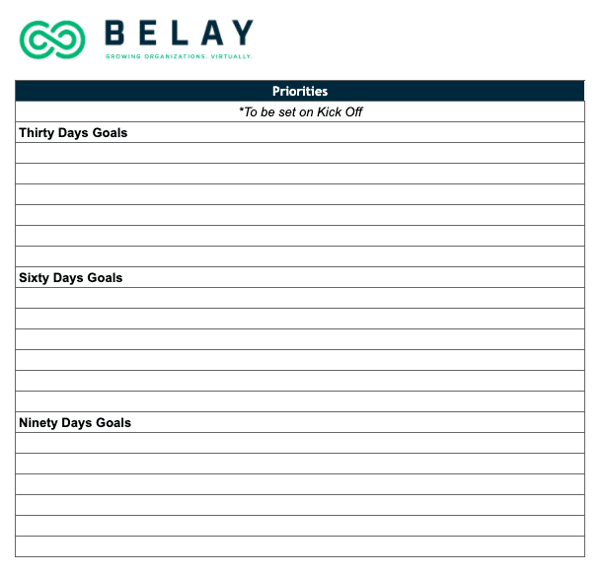As we’ve previously discussed, onboarding a remote employee often comes with a learning curve to navigate.
But it is an inarguably critical curve.
In fact, according to the Society for Human Resource Management, quality onboarding increases the likelihood of retention three years later. Further, increased performance, higher productivity, and elevated employee engagement also cultivate purposeful introductory experiences.
The short version? Your onboarding process has to be more intentional than including your mission statement in the signature of their emails and giving them branded corporate swag followed by a hollow, ‘Go team!’
But you need help. And, admittedly, some of you may have needed it yesterday.
So how can you quickly onboard your remote employee in order to hand off all the things?
Unpopular answer: All the things will take time to handoff, so we suggest identifying one or two things – at least for now – that someone can handle for you with little direction.
It’s better to have someone be an expert at a couple of things quickly than a novice at everything for an extended period of time. And it never hurts to let the new kid score a few wins early on, right?
So while that may not be ideal, proper onboarding – the kind that ensures the retention and productivity we mentioned earlier – takes time. As in at least 90 days.
Why? Because …
Rome Wasn’t Built In A Day
Once you’ve successfully handed over a few responsibilities, it’s time to start playing the long game. Here, we’ll break down a little glimpse behind the scenes of our onboarding process at BELAY.
The First Two Weeks: A Checklist
Week One:
TRAINING
Set 30/60/90 day goals (use the attached worksheet and the one below)
CHECK-IN/SHARE FEEDBACK
Set a quick touchpoint call: Questions, roadblocks, feedback?
CALIBRATE
1:1 Meeting: Continue training, discuss goals and expectations, and initial quick-win tasksWeek Two:
TRAINING
Train on next 1-2 priority tasks and projects, including corresponding tools
CHECK-IN/SHARE FEEDBACK
Share real-time feedback with one another leveraging preferred communication method(s)
CALIBRATE
1:1 Meeting: Evaluate progress and share feedback.
Ready for additional tasks and training?
More space needed?
Loosening The Reins
After the first two – intensive – weeks of onboarding your remote employee, you should both feel more comfortable allowing a little more space between you.
Encourage them to be in the driver's seat to start running with tasks – giving them a week or two to get their sea legs – and when you both feel like the time is right, continue your cadence of handing tasks over, checking in, offering feedback and support – wash, rinse, repeat.
In no time, you’ll have a well-trained, integrated and independent rockstar remote employee ready to help you conquer the world.
For more tips on how to onboard a remote employee, check out this free resource!
